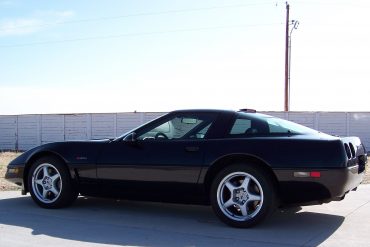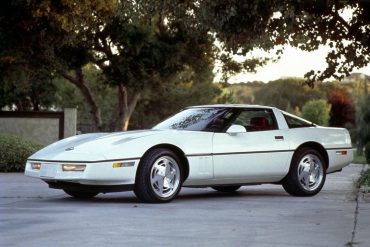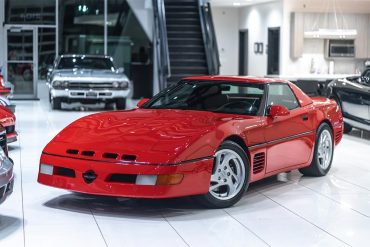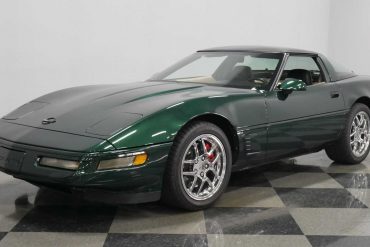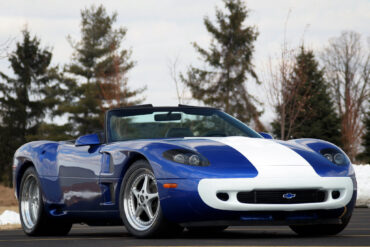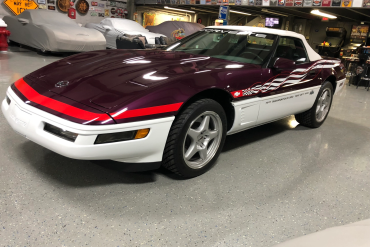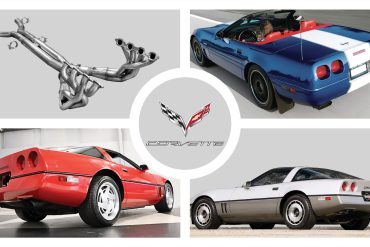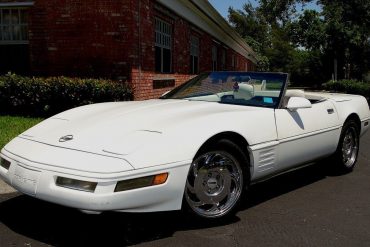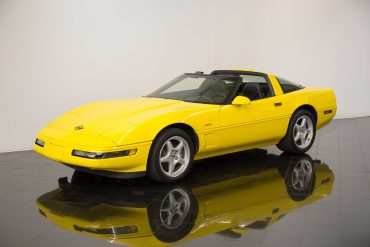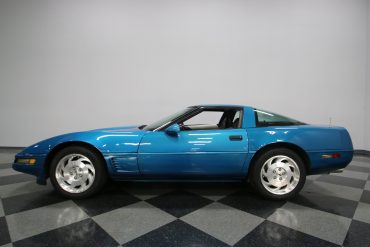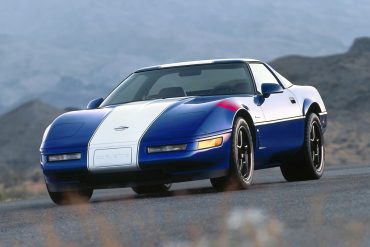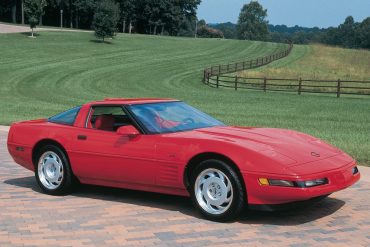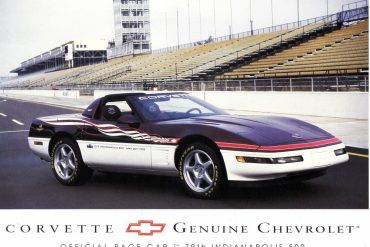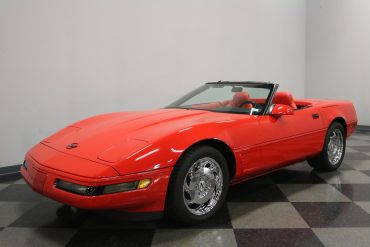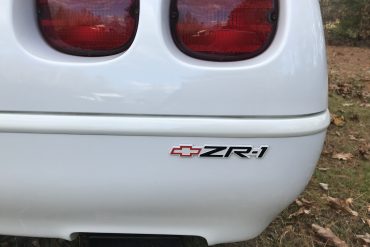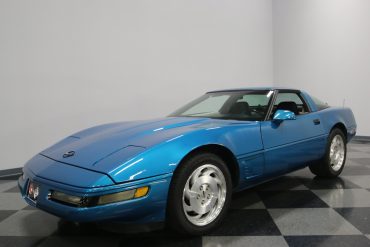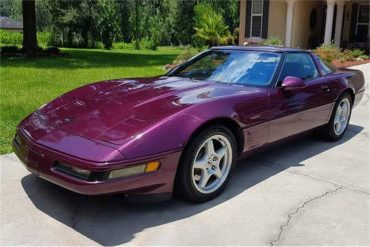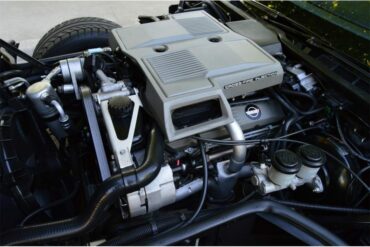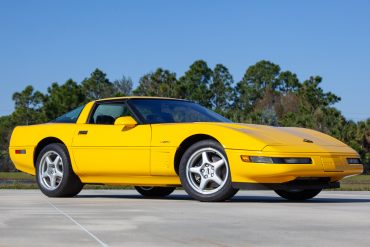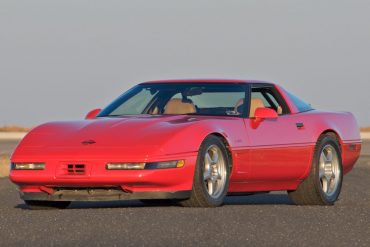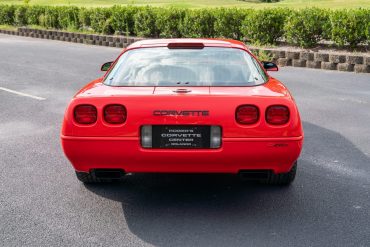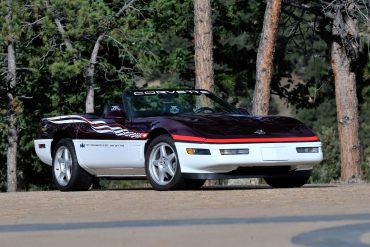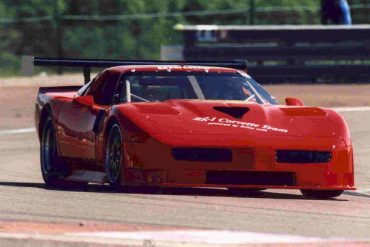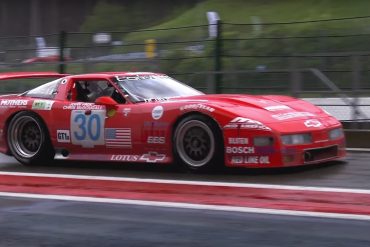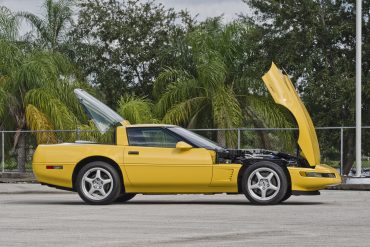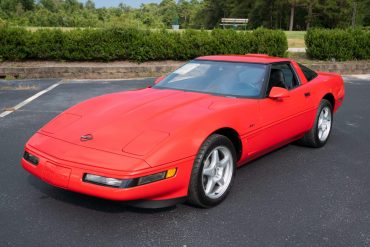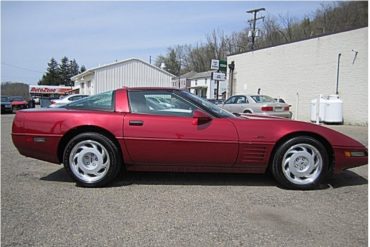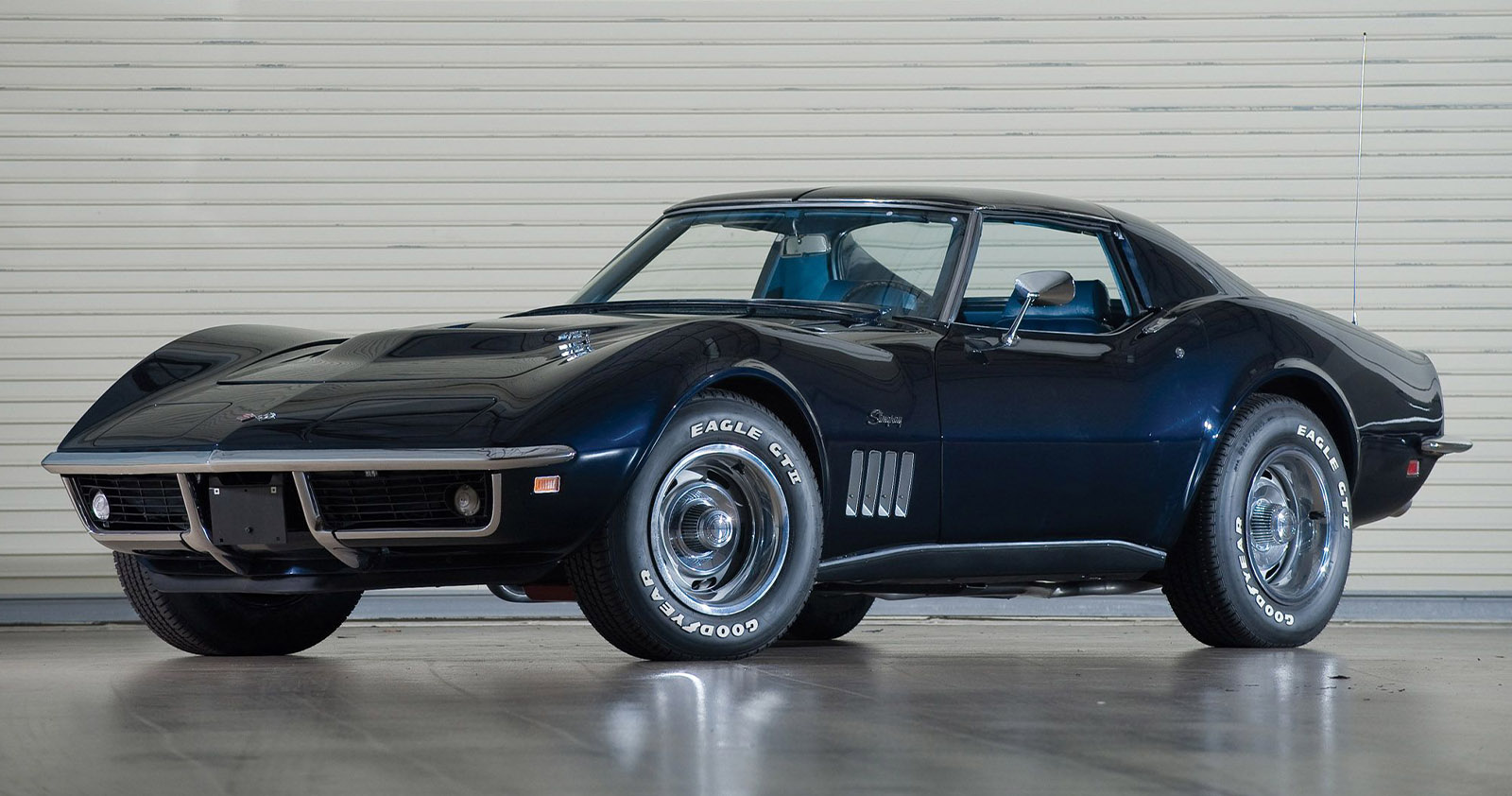The last C4 ZR-1 was built in 1995, resulting in a total number of 6,939 units being built during its six year production run. Total sales numbers decreased to 20,742 units
C4 Corvette Car Covers Corvette Gray 7 Layer Waterproof Car Cover Made for all C4 Corvettes, this car cover with...
Chevrolet's introduction of the LT1 in 1992 as the base engine in the Corvette phased out the L98 based Callaway Twin Turbo. Previously, Callaway Corvettes made their increased power through positive manifold pressure; now they made it through increased displacement and finesse. Initially called the CL1 or CR1, they designated the chassis they were built upon. They were based on the pushrod LT1 cars (CL1) or the 32 valve DOHC LT5 ZR-1 cars (CR1).
Polo Green 1995 Chevrolet Corvette We found some examples of 1995 Corvette in the Polo Green color scheme. These real Polo...
The Corvette Guldstrand Nassau Roadster was a coachbuilt Corvette is based on the ZR-1 and was equipped with a 475...
As Chevrolet continued to refine the fourth-generation Corvette, and as the model continued to evolve into a higher-performance variant of...
These are the top full exhausts for 1984-1996 Corvettes. The installation of a custom exhaust provides a great way to...
Arctic White 1995 Chevrolet Corvette We found some examples of 1995 Corvette in the Arctic White color scheme. These real Arctic...
1995 Corvette – The Ultimate Guide Even with eleven years already behind it, the C4 Corvette still managed to receive...
Bright Aqua 1995 Chevrolet Corvette We found some examples of 1995 Corvette in the Bright Aqua color scheme. These real Bright...
The early C4's had their problems, what with the 1984 Cross-Fire Injection and its unusual 4+3 manual transmission. By the late 1980's, the fourth-generation Corvette had evolved into a more desirable automobile, thanks in part to the arrival of the ZR-1.
We have curated the ultimate collection of the 1995 Corvette Wallpapers and HD backgrounds for you to enjoy. Free to download
1995 Corvette Ads We have curated a cool list of all the 1995 Corvette advertisements, commercials and posters we could...
Torch Red 1995 Chevrolet Corvette We found some examples of 1995 Corvette in the Torch Red color scheme. These real Torch...
A tip whispered in our ears here at Corvsport told of a pristine condition, 900 original miles 1995 Corvette C4...
Looking for information on how to maintain your 1995 Corvette? We've curated resources to help you keep your Corvette in great shape for years to come!
Dark Purple 1995 Chevrolet Corvette We found some examples of 1995 Corvette in the Dark Purple color scheme. These real Dark...
The C4 Corvette debuted to a frenzy of publicity and would ultimately enjoy a lengthy run, spanning 13 years of production. During this period, GM installed a number of memorable powerplants. Many of these engines proved to be quite innovative in design, even when saddled with newly-mandated emissions equipment of the era. The following is a comprehensive guide to powerplants of the C4 era.
See the complete technical specifications and performance information for the 1995 Chevrolet Corvette, including engine specs, acceleration, & quarter mile.
1995 C4 Corvette RPO Codes, Options Codes & Order Guide If you are looking to decode your 1995 Corvette RPO’s...
The 1995 Corvette was offered in different colors, but what are your thoughts about this one in Competition Yellow?...
The following list of common issues is intended for individual reference only, and may not reflect the specific issues of every 1995 Corvette.
As Chevrolet continued to refine the fourth-generation Corvette, and as the model continued to evolve into a higher-performance variant of its former self, it...
This car was created by Doug Rippie. His claim to fame was the Corvette Challenge Series. Rippie loved racing Corvettes in the US, but, his life-long dream was to take on the world-class marques at Le Mans. So, when Chevy introduced the C4 ZR1 the opportunity was opened up. Via his collaboration with MerCruiser and Lotus Engineering, all with Chevy’s blessing, the "Black Widow" program created special street and race versions of the LT5 engine. This engine made 525hp.
Built in 1995 by Doug Rippie Motorsports, this ZR-1 Corvette is the only such example to compete in the 24...
The 1995 Corvette was maturing as both a performance platform and as an aesthetic knockout. Get all the options, pricing, and color data here.
This Is the Car You Want to Buy Recently, we published a long and detailed article on the Corvette ZR-1...
Dark Red 1995 Chevrolet Corvette We found some examples of 1995 Corvette in the Dark Red color scheme. These real Dark...
Competition Yellow 1995 Chevrolet Corvette We found some examples of 1995 Corvette in the Competition Yellow color scheme. These real Competition...


